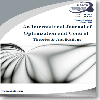Investment evaluation of wind turbine relocation
Investment evaluation of wind turbine relocation
___
- [1] Ministry of Energy and Natural Resources, https://enerji.gov.tr/, Accessed Date (11.10.2018).
- [2] Develi, A. & Kaynak, S. (2012). Energy Economics, Frankfurt am Main, ISBN 3631633335, DEU:Peter Lang AG.
- [3] Turkish Wind Energy Association (2018), Turkish Wind Statistic Report, https://www.tureb.com. tr/yayinlar/turkiye-ruzgar-enerjisi-istatistik-raporutemmuz-2018
- [4] Ministry of Energy and Natural Resources (2014). 2015-2019 Strategy Plan, http://sp.enerji.gov.tr/ ETKB_2015_2019_Stratejik_Plani.pdf.
- [5] Bahgat, G. (2006). Europe’s Energy Security: Challanges and Opportunities, International Affairs, 82(5): 961-975.
- [6] Desrochers, G., Blanchard, M. & Sud, S. (1986). A Monte-Carlo Simulation Method For The Economic Assessment of The Contribution of Wind Energy to Power Systems, IEEE Transactions on Energy Conversion, (4), 50-56.
- [7] Venetsanos, K., Angelopoulou, P. & Tsoutsos, T. (2002). Renewable Energy Sources Project Appraisal Under Uncertainty: The Case Of Wind Energy Exploitation Within A Changing Energy Market Environment. Energy Policy, 30(4), 293- 307.
- [8] Liberman, E. J. (2003). A life cycle assessment and economic analysis of wind turbines using Monte Carlo simulation . MSc Thesis, Air Force Institute Of Technology, Wright-Patterson Air Force Base, Ohio.
- [9] Özerdem, B., Ozer, S. & Tosun, M. (2006). Feasibility study of wind farms: A case study for Izmir, Turkey, Journal of Wind Engineering and Industrial Aerodynamics, 94(10), 725-743.
- [10] Vardar, A. & Çetı̇n, B. (2007). Cost Assessment of The Possibility of Using Three Types of Wind Turbine ın Turkey. Energy Exploration &Exploitation, 25(1), 71-82.
- [11] Moran, D. & Sherrington, C. (2007). An Economic Assessment of Windfarm Power Generation in Scotland Including Externalities, Energy Policy, 35(5), 2811-2825.
- [12] Madlener, R., & Wenk, C. (2008). Efficient investment portfolios for the Swiss electricity supply sector.
- [13] Williams, S. K., Acker, T., Goldberg, M. & Greve, M. (2008). Estimating the economic benefits of wind energy projects using Monte Carlo simulation with economic input/output analysis. Wind Energy, 11(4), 397-414.
- [14] Vardar, A. & Çetin, B. (2009). Economic Assessment of The Possibility of Using Different Types of Wind Turbine in Turkey, Energy Sources, Part B, 4(2), 190-198.
- [15] Ay, A. (2010). Energy Sources And Investment Project Assessment: A Case Study About Wind Energy In Turkey, Masters Thesis, Bahçeşehir University, Istanbul.
- [16] Hamamcioğlu, V. (2010). Rüzgar Enerji Kaynaklı Elektrik Üretiminin Teknik/Ekonomik Analizi ve Yöresel Uygulaması, Masters Thesis, Yıldız Teknik Universitesi, Istanbul.
- [17] Frølunde, S. G., & Obling, P. E. (2010). Valuation models for wind farms under development. Graduate Thesis, http://studenttheses.cbs.dk/handle/10417/1080.
- [18] Cardell, J. B. & Anderson, C. L. (2010). Analysis of The System Costs of Wind Variability Through Monte Carlo Simulation, In System Sciences (HICSS), 43rd Hawaii International Conference on System Sciences, 1-8.
- [19] Rehman, S., Ahmad, A. & Al-Hadhrami, L. M. (2011). Development and Economic Assessment of a Grid Connected 20 MW Installed Capacity Wind Farm, Renewable and Sustainable Energy Reviews, 15(1), 833-838.
- [20] Ertürk, M. (2012). The Evaluation of Feed-In-Tariff Regulation of Turkey For Onshore Wind Energy Based on The Economic Analysis, Energy Policy, 45, 359-367.
- [21] Doğan, B. T., Çolakoğlu, A. & Kincay, O. (2012). RETScreen Analiz Programı ile Hatay’da Rüzgar Enerji Santrali Fizibilite Analizi, Tesisat Mühendisliği, 131, 22-27.
- [22] Khindanova, I. (2013). A Monte Carlo Model of a Wind Power Generation Investment, The Journal of Applied Business and Economics, 15(1), 94.
- [23] Özçelik, B. D. (2016). Türkiye’de Rüzgar Enerjisinin Durumu: Karaburun, Urla, Samandağ ve Hereke Rüzgar Enerjisi Santralleri Fizibilite Analizi, Maliye Finans Yazıları, (106), 49-72
- [24] Simoes, M. G. & Farret, F. A. (2008). Alternative Energy Systems Design and Analysis With Induction Generators, CRC Press, Second Edition, ISBN. 978- 1-4200-5532-0, USA.
- [25] Ross, S, Westerfield, R. W. & Jaffe, J. (2010). Corporate Finance, Ninth Edition, McGrawHill.
- [26] Manwell, J.F., Mcgowan J.G. & Roger, A.L. (2010).Wind Energy Explained: Theory, Design and Application, Second Edition, John Wiley & Sons Ltd.
- [27] Durak, M. & Özer, S. (2008). Rüzgar Enerjisi Teori ve Uygulama, Ankara.
- [28] Tansi, B.N. (2012). An Assessment of Cameroons Wind and Solar Energy Potential – A Guide for A Sustainable Economic Development, Hamburg, DEU: Diplomica Verlag.
- ISSN: 2146-0957
- Yayın Aralığı: 4
- Yayıncı: Prof. Dr. Ramazan YAMAN
On the explicit solutions of fractional Bagley-Torvik equation arises in engineering
Simulation of glucose regulating mechanism with an agent-based software engineering tool
Sevcan EMEK, Vedat EVREN, Şebnem BORA
Ana R.M. CARVALHO, Carla M.A. PINTO, Jo˜ao Nuno TAVARES
A comparison of some control strategies for a non-integer order tuberculosis model
Investment evaluation of wind turbine relocation
Sakir SAKARYA, Hasan Huseyin YİLDİRİM
Ilker KUCUKOGLU, Tulin GUNDUZ, Fatma BALKANCİOGLU, Emine CHOUSEIN TOPAL, Oznur SAYİM
An application of fuzzy linear modeling: prediction of uncertainty for betaglucan content
Analysis of boride layer thickness of borided AISI 430 by response surface methodology
A Boiti-Leon Pimpinelli equations with time-conformable derivative
Kamal Ait TOUCHENT, Zakia HAMMOUCH, Toufi MEKKAOUI, Canan UNLU
